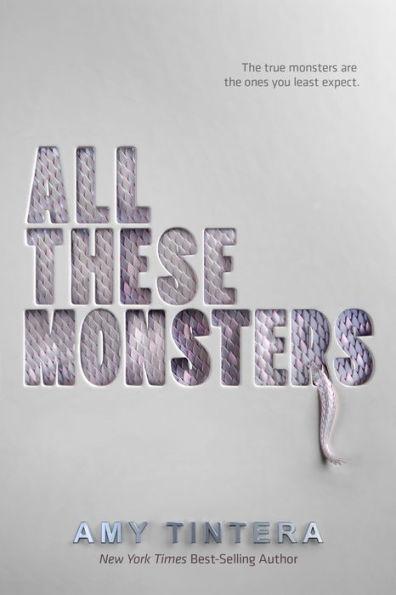
YA SCIENCE FICTION
Amy Tintera
Houghton-Mifflin Harcourt
Hardcover (also available as an e-book, an audiobook, and on audio CD), 978-0-3580-1240-5, 464 pgs., $17.99
July 7, 2020
Venerable filmmaker Francis Ford Coppola touched off a firestorm when he called super-hero fantasy movies “despicable,” characterizing such cinematic plotlines as “more like amusement park rides” than worthwhile literary excursions into good and evil and the intricacies of the human struggle with both.
Not so with the Gen-Z-anchored plotlines in NYT-bestselling-author Amy Tintera’s All These Monsters. In fact, refreshingly, the thematics are quite the opposite of those in the typical dilemma of super-sized evil monstrosity opposed to wily, young, hip, and savvy heroes or heroines who triumph through a combination of high-tech wizardry and secret superpowers.
Tintera’s very human, ordinary Clara finds herself in the classic teenage dilemma: a hostile, unsupportive family touched by alcoholism, violence, and boundary issues. In a variation of the troubled youth trope where enlisting in the military is a protagonist’s escape from a dangerous home life, Clara joins the forces fighting the scrabs, the horrific, bloodthirsty otherworldly menace wreaking havoc on humanity from underground.
I found the thematics to be strongly relatable: Gen-Z in real life faces multiple menacing crises such as global warming, dissipated energy sources, world hunger, and global poverty. Tintera doesn’t reach for the magic wand: there’s no superpower a la Guardians of the Galaxy or super high-tech magic like Iron Man. Rather, Clara surmounts the very real grunt work of fight-training, the bruises, the sore muscles, the pain and the scars, real and physical as well as hidden and emotional. “I was stiff and sore the third morning of training,” Clara confesses, “and I winced as I descended the steps to the ground floor.” Progress comes only through physical effort; dealing punches and defensive blows comes from taking them—there’s no Spiderman-potion shortcut to strength and agility. And the blows—both received and dealt—physically hurt, and no Jedi-touch magically heals and soothes.
At the same time, Clara grapples with the coming-of-age struggles of friendship, loyalty, and belonging. She explains to fellow scrab-fighter Julian that she doesn’t know how to position herself in the ubiquitous hive reality of Snapchat and social media, “Because I had no friends.”
Truly, Clara also has no family, because her mother chose her alcoholic father over her, letting him back into the home, forcing Clara out. And she had no friends she could trust before the ragtag band of “recruits” discovered that individual survival depended on group tactics in the close-quarters combat with the wily, murderous scrabs. The recruits learn that evil is real and dangerous, and only courage and loyalty—and soldierly sacrifice—can prevail, and often only at a high price.
These are weighty teenaged themes Tintera deals with head-on. Clara fights her way into a leadership role in the good struggle against evil forces. The dialogue is fairly simple, but not simplistic—it works. There’s something of a love triangle, but that’s more of a sideshow, a nod toward the narrative components required by a Young Adult (YA) readership for whom adventure, struggle and romance go hand in hand. Without spoiling anything, the romance is a confusing triangle—something typical of less rigidly defined relationships that are a defining characteristic of Gen-Z relationships today, and as such, Tintera serves her readership.
There is a bit of a Hunger Games subtext flowing through the story, with teens bearing the weight of life and death struggles as uncaring adults seem only to stand by disconnected and unappreciative but again, this is a YA story, and it works.
The writing is simplistic in its paucity of habitable prose in favor of descriptive narration, but that too is appropriate to the YA readership. There’s plenty of both action and unpredictability, and Tintera spins a good, if spare, tale that I enjoyed for its action, honesty and bold approach to good, evil, and the struggle of youth to define itself in terms of both.
All These Monsters is part morality play, part coming of age drama, and part rollercoaster ride. The first two considerations make it a solid, entertaining read. The last part? Well, perhaps this story is an amusement park ride Coppola might enjoy, if he gave it a chance.
Amy Tintera is the NYT bestselling author of All These Monsters and the Reboot and Ruined series. She earned degrees in journalism and film and worked in Hollywood before becoming an author. She lives in Austin, Texas, where she can usually be found staring into space, dreaming up ways to make her characters run for their lives. Her next book, All These Warriors, will be published July 13, 2021.
